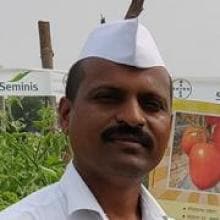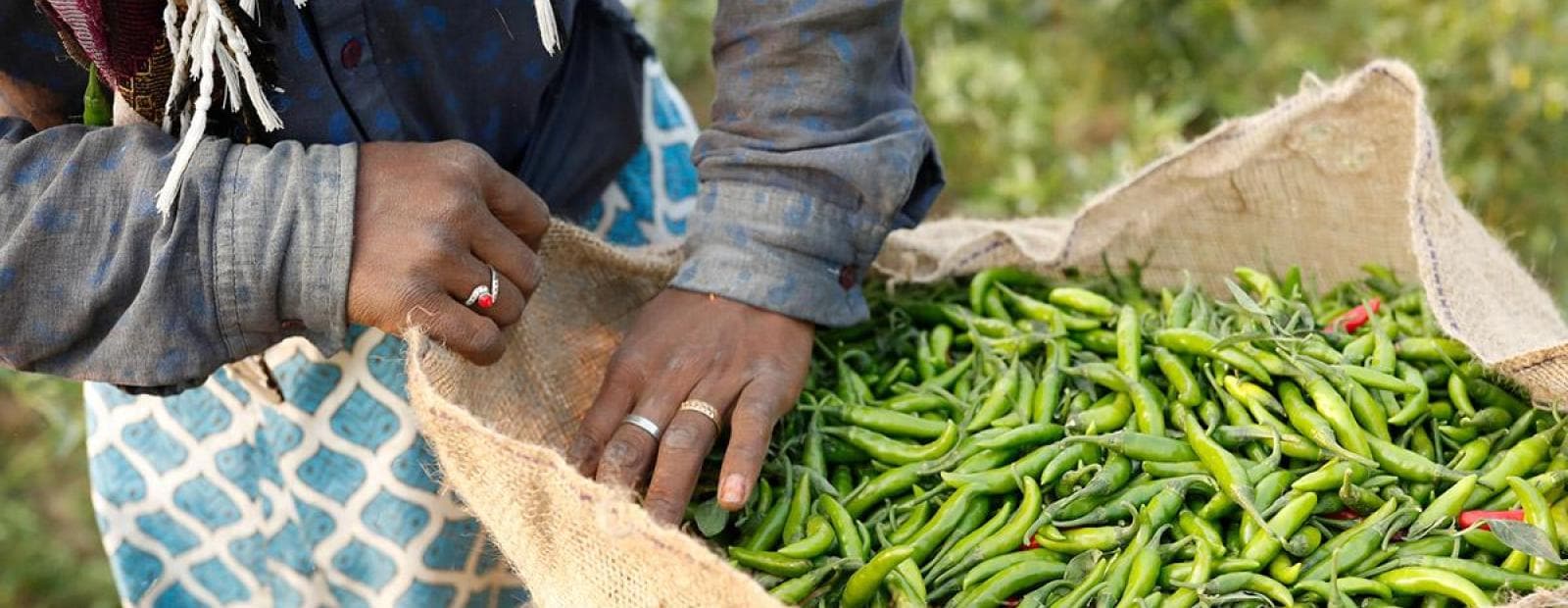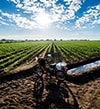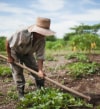Two Farmers, A World Apart
What do a large-scale farmer in the United States and a smallholder grower in India have in common? More than you might think, yet their differences have much to reveal about how our global food system can work better for everyone.
This story is an update from our COVID-19 and Smallholders news series.
Ramesh Dattatray Dhatrak is a farmer in western India. He has a master’s degree in chemistry. Alongside his brothers and their extended family, he grows vegetables on six hectares in a small village in the state of Maharashtra.
Randy Bailey is a farmer in the United States. Nearly 15 years ago, he took over his father’s pepper farm. Now he runs operations in two states, growing and selling specialty peppers across the eastern US.
Though they’re farming on opposite sides of the world, Ramesh and Randy would probably have a lot to talk about. Both grow vegetables, crops known for their comparative fragility and short shelf life.
And both have had their lives seriously shaken up by the many changes brought on by the need to respond to Covid. But the pandemic affects their businesses very differently. What is a complicated business challenge for one of them is a much more dire fight to sell produce, remain profitable and stem regional hunger for the other.
Smallholders Need a “Pull” Market
For Randy, who primarily supplies supermarkets, the change was immediate and a little surprising: demand for his product went up. But it makes sense that with more people eating at home, we’re buying more food at the grocery store. Good for Randy, right?
Yes—except for a short-lived but severe bottleneck at supermarkets, which struggled to find storage space for their ballooning inventory. Randy had to moderate his shipments so as not to overload them, which caused a chain-reaction of backups in his warehouses. Then, he had to plant more, while also collaborating with other growers in his network to help meet the demand.
Even though there were hiccups, Randy was still able to function within the relatively organized ecosystem by which growers are connected to consumer demand. Ramesh lives in a still-emerging region, where there is no similarly organized ecosystem.
“In normal situations, we sell our produce at the market yard, or sometimes a trader collects our produce from the farm itself to further sell it to the food supply chain,” he reports.
What’s missing from a business model that requires farmers to go to a market most days? Reliable consumer demand. Growers have no way of predicting whether a buyer will come along, and vegetables have a very short window in which they’re viable to sell. Transported between markets in the heat of the day, they start to spoil fast.

Cold Storage is Key
And that’s not even taking into account the recent upheaval.
“In the current Covid situation,” says Ramesh, “we face challenges like irregularity in market yards opening, labor issues and transportation.”
Disruptions in the transport process present a far more serious challenge to a farmer in a part of the world where infrastructure is still developing. They often lack sufficient cold storage. Vegetables are perishable. Time is of the essence. Tomorrow might be too late to sell a tomato stored outdoors.
This isn’t an issue for a farmer in Randy’s position.
“Throughout our buildings we have temperature sensors and alarms that let us know when things are getting off,” he says, adding, “And there are monitors on the trucks, actually sensors on the pallets. Supermarkets will check that temperature to be sure it was held through the transport process.”
One possible solution for farmers like Ramesh is cooperatives, which exist in other Indian industries such as dairy. A similarly unified one for vegetables just doesn’t. It’s on farmers to organize themselves, which is tough in rural farming areas without much extra cash flow.
Policy Protections, or Lack Thereof
What’s the use in organizing anyway, when you’re not even sure you can get a decent price for your produce?
One way to manage risk is a set, fair price, but that's harder to come by in India than in a more industrialized nation.
In normal years, commanding a good price is Ramesh’s biggest challenge. In fact, the lack of a predictable selling price is the biggest barrier to upping his farm’s sustainability.
Insuring crops against harvest loss is another way to mitigate risk. Randy finds private insurance cost-prohibitive, but is able to insure himself for up to about half his crop. He carefully monitors the risk he’s taking to make sure his farm stays economically viable at all times.
Being nestled within a market ecosystem means that any risk Randy takes is more dispersed across supports and thus more likely to yield a return. For smallholders, the ratio of predicted income to risk is much lower.
Some things are starting to change. A new local government program offers some insurance to veggie farmers like Ramesh.
Building A Collaborative Network
Randy enjoys support from public programs like the Cooperative Extension Service and local universities, which have teams available to help him make agronomic decisions.
In Ramesh’s part of the world, this advisory role is largely filled by Ramesh himself.

That experience helps him navigate decisions on his own farm, and thankfully, he also has the support of Better Life Farming centers in the region.
Both farmers highlight the importance of starting out with good plant genetics, which provide durability and longer shelf life. But improved seeds and agronomic support are only one factor. For smallholders to truly succeed, they need innovative changes throughout the entire global food system.
It’s because of the differences between farmers like Ramesh and farmers like Randy that we at Bayer are so passionate about building up smallholder ecosystems. What does that look like? Giving them the opportunity to participate in trainings and earn certifications. Improving their market access. Providing financial services to help them grow their businesses. And much more.
Bayer can’t realize this vision alone. Through the Better Life Farming Alliance, we’re working to cultivate strong partnerships to make these ecosystems a reality. Why? Because food security depends on it. Smallholders are the key to resilience in places most affected by a crisis like Covid-19.
If there is anything we can learn from the pandemic, it’s that the food system is only as strong as its weakest link.
Keep exploring the
news series
|
|
After the Start: Where Smallholders Stand Nearly a Year Into the Pandemic |
|
|
A Pandemic and a Plague: Locusts Add to Farmers’ Dilemma |
|
|
Breaking the Cycle: A New Season |
|
|
Digital Defense: How Information Can |
|
|
Safeguarding the Food Supply Chain |
|
|
Fighting Hunger With |




















